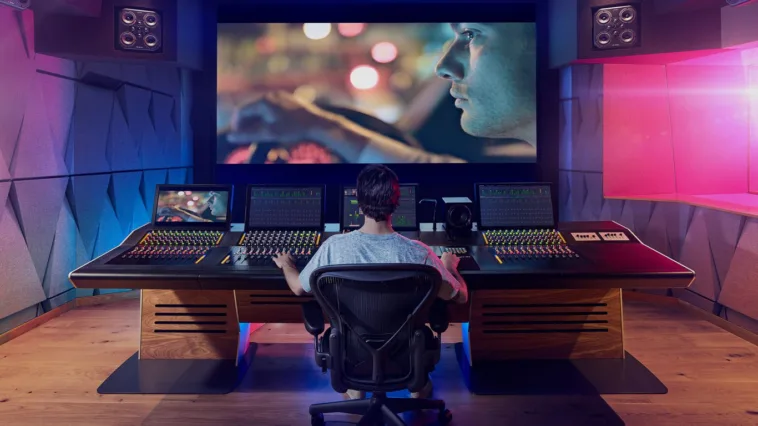Great editing isn’t about using flashy cuts or over-the-top transitions. It’s about making sure no one notices the editing at all.
A truly great edit remains invisible to create a seamless visual experience, allowing your viewers to forget they are watching a carefully edited sequence of shots.
But what exactly makes an edit “invisible”? And why is invisibility the ultimate hallmark of great editing?
Read on to find out.
In this blog, we will explore the secrets behind great video editing and some clever techniques our editors use to keep audiences engaged without ever drawing attention to the work behind the scenes.
The Secret Behind Great Editing
In filmmaking and commercial video production, great editing does not call attention to itself. Instead, it is invisible and works quietly in the background to ensure every shot is just right, all while maintaining a natural flow that captivates viewers. As our video editors say, when editing is done right, your audience doesn’t think about the cuts, scene transitions, or effects; they’re so absorbed in the video or film that they don’t even notice them and experience every shot as if it’s happening in real.
The best example?
The Social Network.
Look at this scene when Eduardo (played by Andrew Garfield) slams Mark’s laptop in a fit of rage:
Did you consciously notice the cut? Did you think about the transition? Chances are, the editing was so seamless or “invisible” that you never noticed it at all. You just felt it. Even though this scene was constructed from multiple takes, the cuts are hidden so well that the movie appears to be one continuous shot. And that’s the hallmark of great editing.
Why Invisibility Matters For Great Editing
Creating a film or commercial video is a collaboration of many moving parts—cinematography, acting, sound design, and storytelling. But editing is where it all comes together. If the editing calls too much attention to itself, it can take the audience out of the story. Great editing ensures viewers stay emotionally connected, allowing them to experience the film or video without distractions. It creates a natural narrative flow that keeps them completely immersed in the story by guiding their emotions without them even realizing it.
But when editing is bad? Your audience will notice immediately. It’s like a glitch in the Matrix. A jarring transition, an awkward pause, or a mistimed cut can pull them out of the visual experience and break the illusion (and their immersion). Instead of staying in the story, the viewer starts noticing the mechanics behind it. And that’s when you lose them.
The Techniques We Use for Achieving Invisible Edits
So, how do we achieve an edit that feels so natural you don’t even notice it? Here are a few of our favorite techniques:
1. Match Cuts
Match cuts are one of the most effective ways to hide an edit. In this, our video editor cuts between two or more shots with similar visual, sound, action, or camera movements to create a smooth transition between scenes. This disguises the cut, making it less noticeable and nearly imperceptible.
2. Camera Occlusion
Camera occlusion is another excellent trick we use to make an edit invisible. It works by having something (a character, an object, or even a shadow) cover the frame for a moment (briefly blocking the camera), giving our editors the perfect place to hide a cut. Since the screen goes dark or blurred for a split second, the audience’s brain doesn’t register the transition. Their brain naturally fills in the gap when something momentarily blocks their vision, allowing our editors to switch shots without them noticing.
3. Whip Pans & Motion Blur
One of our other go-to tricks is the whip pan. It’s simple but incredibly effective. In this, our team uses fast camera movements to disguise or hide an edit. When the camera quickly pans (moves sideways) or tilts (moves up/down), everything on the screen blurs for a split second (motion blur), and in that split second, we make our cut. These fast camera movements can blur the line between shots, effectively hiding the exact moment of the cut.
A well-placed whip pan edit can trick your audience into thinking it’s still watching a single shot, even though it just switched to a new one. This keeps the pace fast, the energy high, and the editing invisible.
4. Pacing and Rhythm
Great editing isn’t just about choosing where to cut but also when to cut. Pacing dictates how an audience feels about a scene. When we sync our cuts to the natural rhythm of a scene, they disappear. That is why our editors carefully choose to cut at the right moment (when the audience expects it or when the shot naturally concludes) to ensure a smooth, unnoticeable transition.
The Beauty of Staying Invisible
At its core, the secret to great editing isn’t about drawing attention to the work; it’s about removing the barriers between the viewer and the story. When the editing is invisible, your audience becomes so absorbed in the narrative that they never stop thinking about how it was made. They just feel it.
At Motion Edits, our passion lies in harnessing this invisible art of editing to transform your footage into a pure cinematic experience. Whether you’re a filmmaker, a production company, or a brand creating high-quality content, our expert post-production ensures that your audience stays engaged in the story without ever being distracted by the mechanics behind it.If you’re ready to elevate your project with editing that speaks for itself, our team is here to support you. Contact us today to see how our services can take your video to the next level!
